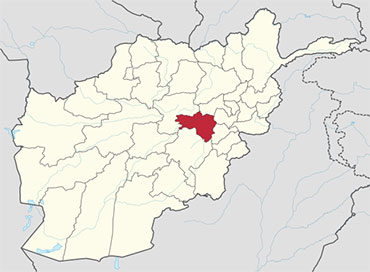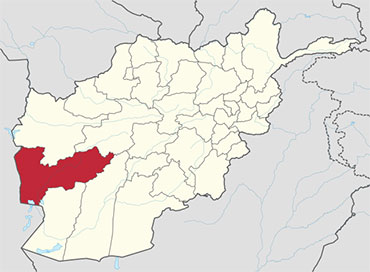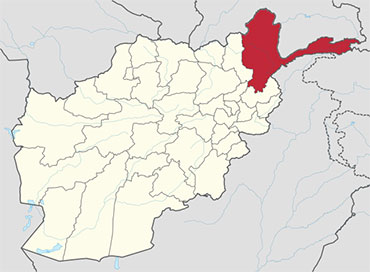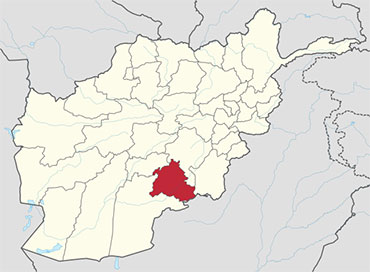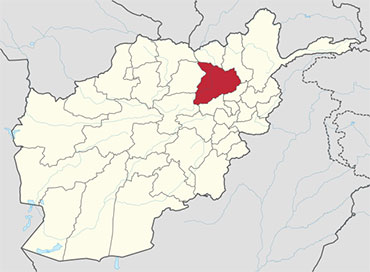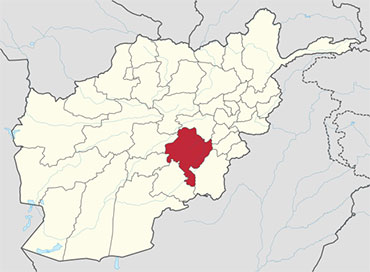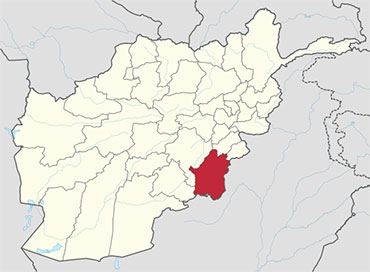 Paktika is one of the 34 provinces of Afghanistan, located in the southeastern part of the country. It has a population of about 413,800, which is a multi-ethnic tribal society. The town of Sharana serves as the provincial capital while the largest town is Urgun.
Paktika is one of the 34 provinces of Afghanistan, located in the southeastern part of the country. It has a population of about 413,800, which is a multi-ethnic tribal society. The town of Sharana serves as the provincial capital while the largest town is Urgun.
History
Paktika is the southernmost part of a historical region known as Greater Paktia (Pashto: لویه پکتیا, Loya Paktia), that was once a unified province including Paktia, Khost and parts of Ghazni and Logar. The tribes that reside in this area were mentioned by the Greek historian Herodotus, who called them the “Pactyans” as early as the 1st millennium BCE.
In the 1970s, the provincial capital of the largely undeveloped and remote province of Paktika was moved from the town of Urgun to Sharana due to its proximity with the main highway, connecting it to the larger cities and commercial centres of Kabul, Ghazni and Kandahar.
Paktika was the site of many battles during the Soviet occupation of the country and the lawless years that followed.
The Siege of Urgun took place between 1983 and 1984.
Recent history
As one of the most remote provinces in Afghanistan and an area that saw much devastation in previous years, Paktika suffers from a severe lack of critical infrastructure. Reconstruction in the province after the fall of the Taliban has been slow compared to that in nearby provinces such as Khost and Zabul. This is primarily due to the remoteness of the region and repeated attacks on aid workers and NATO forces.
In June 2004, members of the Utah and Iowa National Guard helped Army Reserve Civil Affairs Soldiers from Oregon establish a Provincial Reconstruction Team base in Sharana, the provincial capital, to lead the development effort. The first full contingent of eight Civil Affairs Soldiers from the U.S. Army Reserve’s 450th Civil Affairs Battalion (Airborne), based in Riverdale Park, Maryland, arrived in September 2004.
In an article from Time, the U.S. base was described as:
“The U.S. firebase looks like a Wild West cavalry fort, ringed with coils of razor wire. A U.S. flag ripples above the 3-ft.-thick mud walls, and in the watchtower a guard scans the expanse of forested ridges, rising to 9,000 ft., that mark the border. When there’s trouble, it usually comes from that direction.”
The Shkin firebase is composed of special operations forces. They target, and are constant targets themselves for the Al-Qa’ida and Taliban fighters who launch frequent strikes from nearby Pakistan. The area is unforgiving, where the enemy can hide at close range while remaining invisible. A hunter can become prey very quickly. As U.S. Army Colonel Rodney Davis puts it, “Shkin is the evilest place in Afghanistan.”
While the province hasn’t witnessed the outright fighting in the last few years that has affected provinces like Helmand, there is a constant low level of tribal violence, accompanied by criminal and Taliban activity. The last serious fighting in the province took place in 2004, amid reports that then-Governor Muhammad Ali Jalali was collaborating with Taliban forces, and that the Taliban had effectively annexed eastern portions of the province. Jalali and many of his allied officials, were replaced and U.S. Special Forces were dispatched to fight the Taliban while the Pakistani forces fought with the Taliban’s allies in neighbouring South Waziristan.
On 1 November 2004, a civil affairs convoy was ambushed near Surobi, between the Shkin firebase and Orgun-E. U.S. Army Spc. James Kearney, a turret gunner, died of a head shot from a sniper, which initiated the ambush. After countless RPGs, PKM rounds and an IED, two vehicles were destroyed and three other Soldiers were wounded. The Provincial Reconstruction Team base was named Camp Kearney on 21 November 2004 to honor the sacrifice of Spc. James Kearney.
Forward Operating Base Super FOB commander explaining the paving process for one of the streets of Camp Super FOB, which will be the largest training and operations base for the Afghan National Army when completed.
On Jun 18, 2008 in the Ziruk District Governor’s compound, 2 members of the Provincial Reconstruction Team, HMN Mark Retmier and CM1 Ross Toles, were killed due to rocket attacks. The Mess hall on Forward Operating Base Sharana is named after CM1 Toles and the hospital is named after HMN Retmier.
In late July 2011, foreign troops and Afghan special forces killed more than 50 insurgents during an operation in eastern Paktika to clear a training camp the Haqqani network used for foreign fighters, NATO said. Disenfranchised insurgents told security forces where the camp was located, the coalition said.
In November 2011, an estimated 60 to 70 Taliban insurgents were killed in an abortive attack on a joint Afghan-ISAF base in the Margha area of Barmal. No international troops were killed or injured in the incident. It is believed the insurgents crossed over from neighboring FATA and Balochistan of Pakistan. In a separate incident the governor of Sar Hawza district died in the same month after his vehicle struck a roadside bomb.
In the spring of 2012 the 172nd Infantry Brigade opened the first Afghan National Army/ US Joint Artillery Fire Base in the Orgun District.
Eight civilians including a pregnant woman and a baby died when Polish soldiers shelled the village of Nangar Khel, where a wedding celebration was taking place. Seven Polish soldiers have been charged with war crimes for allegedly opening fire in revenge.
U.S. Army PFC Bowe Bergdahl was captured by enemy forces on July 4, 2009 near the town of Yahya Khel. This incident occurred as a result of the Soldier leaving his unit without permission and venturing into the local area. He was the last know American P.O.W of the Afghanistan conflict. He was freed in a prisoner trade on May 31, 2014.
Demographics
The population of Paktika province is 413,800, which is a multi-ethnic tribal society. According to the Naval Postgraduate School, the ethnic groups of the province are as follows: Pashtun, Tajik, Arab, Pashai, and other various minority groups. Other sources mention that ethnic Pashtuns make up around 96% of Paktika’s population. Around 15,000 people (1.8%) are ethnic Uzbeks; and about 5,000 people speak some other languages. These are most probably Hazaras or Baloch. There is also a small Tajik community in Urgun.
Districts
Paktika province is divided in to 19 districts.
| District | Population | Area |
|---|---|---|
| Barmal | 88,028 | |
| Dila | 50,203 | |
| Gayan | 42,495 | |
| Gomal | 64,275 | |
| Janikhel | 35,251 | |
| Mata Khan | 19,758 | |
| Nika | 15,103 | |
| Omna | 25,690 | |
| Sar Hawza | 36,236 | |
| Surobi | 48,291 | |
| Sharana | 54,416 | |
| Terwa | 15,332 | |
| Urgun | 89,718 | |
| Waza Khwa | 50,818 | |
| Wor Mamay | 30,135 | |
| Yahyakhel | 30,161 | |
| Yusufkhel | 32,648 | |
| Zarghun Shar | 38,024 | |
| Ziruk | 43,190 |
